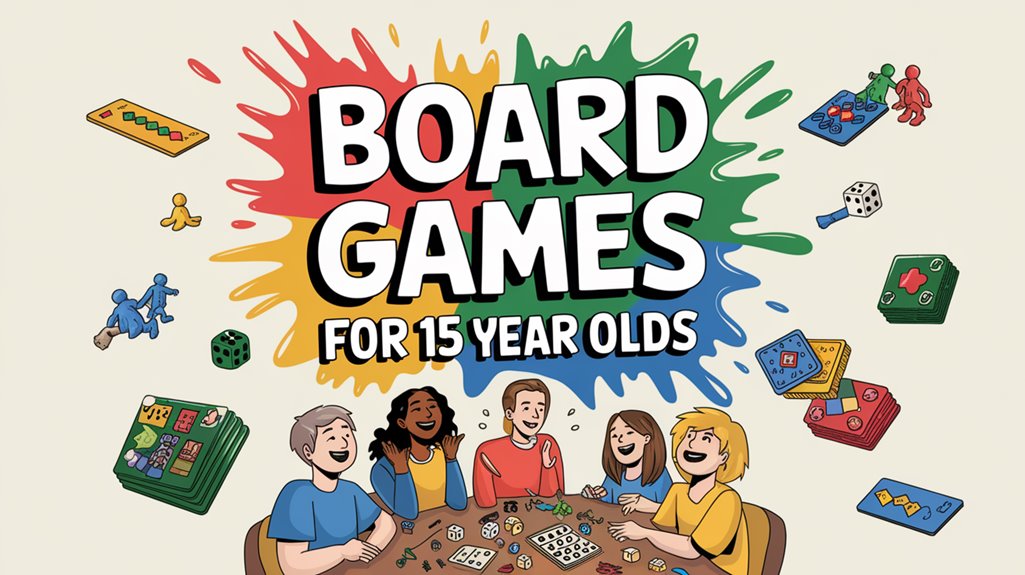Exploring Battle of Crete themed board games provides a fascinating glimpse into the military strategies and combat scenarios of Operation Mercury in 1941. Games like ‘Operation Mercury: The Invasion of Crete’ and ‘Parachutes over Crete: A Panzer Grenadier Game’ authentically recreate the challenges faced by Axis and Allied forces. These games stand out for their historical accuracy and the strategic depth they offer players. What makes these games unique in portraying this pivotal World War II campaign?
Operation Mercury: The Invasion of Crete (2017)
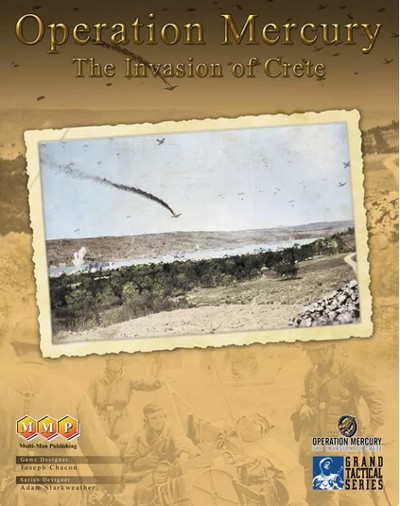
Operation Mercury: The Invasion of Crete (2017) skillfully depicts the strategic and tactical intricacies of the historic battle through the Grand Tactical Series (GTS) 2.0 rules. Players command divisions and maneuver company-sized units in scenarios ranging from small skirmishes to the full-scale invasion involving multiple German divisions and Allied brigades. The game covers all major airdrops and engagements across the island, offering an immersive experience of this pivotal World War II conflict.
Details
The Invasion of Crete is a strategic game that authentically recreates the historical battle, encompassing shifting Allied morale, unexpected events, and naval support choices. The game skillfully captures the intricacies of war, where casualties and events influence Allied morale, potentially affecting the outcome of the conflict. Random events, such as tank malfunctions and partisan attacks, introduce an element of unpredictability, requiring players to adapt their strategies accordingly.
Players are faced with critical decisions regarding naval support from Commonwealth forces, balancing the benefits to ground operations against the risk of losing essential ships to German air attacks. This aspect mirrors the tough choices made by commanders during the actual battle.
Featuring thirteen scenarios, from specific airdrops to broader conflicts, players can engage in one-, two-, and three-map battles, or delve into the full campaign across five maps. The game also offers options for different drop scenarios, enabling exploration of alternative historical outcomes.
Memoir ’44: The Invasion of Crete (2011)
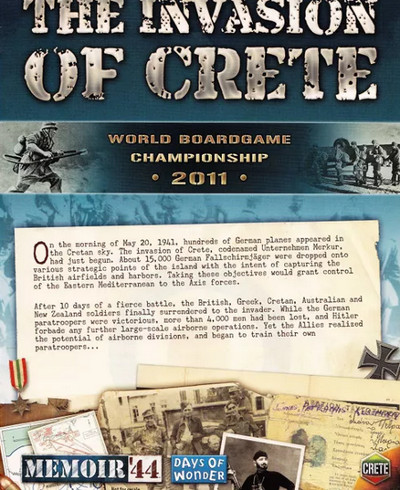
Memoir ’44: The Invasion of Crete (2011) includes a six-scenario booklet depicting Operation Mercury. These scenarios were prominently featured in the World Boardgame Championship 2011, showcasing their competitive and historical significance. The expansion explores strategic elements like the use of decoded puzzle code intelligence by the British and the massive scale of the German airborne assault.
Scenarios of the Memoir ’44: The Invasion of Crete
- The Landing at Maleme
- The Battle for Galatas
- The Attack on Chania
- The Defense of the Airfield
- The Counterattack at Rethymno
- The Final Assault on Heraklion
Details
Featuring a diverse set of quick-playing scenarios with a strong historical flavor, Memoir ’44: The Invasion of Crete (2011) offers an immersive mini-campaign experience complete with attrition and reinforcement rolls. This expansion presents a compact yet rich array of scenarios that capture key moments of the Battle of Crete, making it perfect for multiple playthroughs.
The scenarios are carefully crafted to blend historical authenticity with dynamic gameplay. Players have particularly enjoyed the second scenario for its balanced and engaging gameplay. Scenarios three and four introduce variety with mixed units and strategic unpredictability, albeit with a reliance on cards and swift objectives.
Each scenario’s unique setup and conditions contribute to a broader strategic narrative, allowing players to experience the ups and downs of the historical battle. Designed by Richard Borg, this expansion showcases the lasting appeal of Memoir ’44. For fans looking for a compact yet profound exploration of World War II’s Mediterranean theater, Memoir ’44: The Invasion of Crete is a highly recommended addition.
Crete 1941: Operation Mercury (2016)
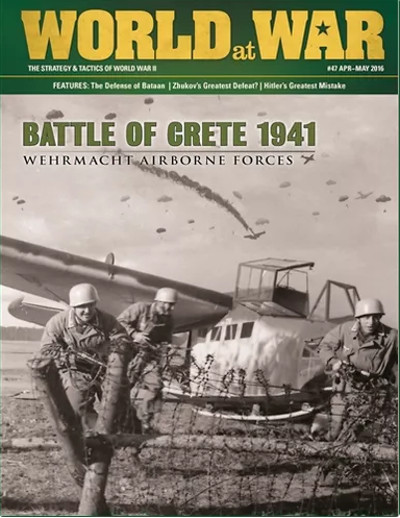
‘Crete 1941: Operation Mercury provides a comprehensive solo gaming experience, putting players in command of German forces facing Allied defenses. The game features distinct Preparation and Operational turns, enhancing strategic depth. With a map showcasing Crete and its waters, and units ranging from battalions to brigades, the game offers historical accuracy and intricate tactical challenges.’
Details
Joe Miranda’s ‘Crete 1941: Operation Mercury’ (2016) provides an immersive solo gaming experience that challenges players to navigate the strategic complexities faced by German forces in the Battle of Crete. The game’s solitaire system offers an enjoyable way to engage with the operational challenges of the historical campaign. However, there have been concerns raised about the victory conditions, with many players suggesting adjustments to make the game more balanced.
Despite these concerns, ‘Crete 1941: Operation Mercury’ remains a tense and engaging experience. While the components are generally appealing, some players have noted room for improvement in the map’s design. The game strikes a balance between historical accuracy and gameplay functionality, offering a credible representation of the obstacles faced by the German forces.
Players take on the role of the German forces, facing off against a challenging Allied Command system. Strategic air attacks are crucial for disrupting Allied evacuation plans, but the reliance on dice rolling for these actions can sometimes overshadow strategic decision-making. The game’s emphasis on air power can also tip the scales, making it difficult to maintain a delicate balance between capturing key locations. Additionally, the penalty for triggering British evacuation prematurely adds an extra layer of strategic depth to the gameplay.
Parachutes over Crete: A Panzer Grenadier Game (2020)
‘Parachutes over Crete: A Panzer Grenadier Game (2020), designed by Michael Bennighof and published by Avalanche Press Ltd., offers a detailed recreation of the Battle of Crete. With 40 scenarios organized into six ‘battle games,’ players can simulate the operational goals of the armies involved, enhancing gameplay with rich historical context.’
Details
A Panzer Grenadier Game has become my preferred board game, known for its intricate platoon-level combat mechanics. This game masterfully simulates the Battle of Crete, offering players a rich and engaging tactical experience. With 39 well-crafted scenarios and detailed historical insights from Dr. Michael Benninghof, it provides both entertainment and educational value. The visually stunning maps by Guy Riessen and high-quality counters by Susan Robinson enhance the overall gameplay experience, making ‘Parachutes over Crete’ a standout choice for history and strategy enthusiasts alike.
Hunters from the Sky (1994)
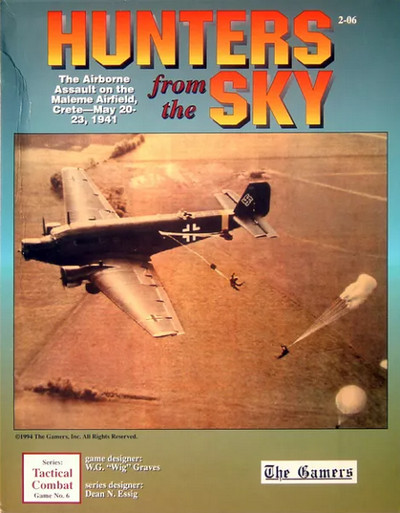
‘Hunters from the Sky’ (1994) authentically recreates the airborne assault on the Maleme Airfield, portraying the intense conflict between the Luftlande-SturmRegiment and the New Zealand 5th Brigade. Players will engage in tactical decision-making and face challenges during this pivotal operation. With its detailed mechanics and historical accuracy, the game offers a captivating experience for World War II strategy enthusiasts.
Details
Hunters from the Sky (1994) is a detailed board game that simulates the Battle of Crete, offering a high level of complexity for players. The game features a 20-minute turn time scale and a ground scale of 125 yards per hex, allowing players to delve into the historical events of the battle. Using infantry platoons and individual vehicles as units, players reenact strategic maneuvers and make tactical decisions on both sides.
The game includes two full-color maps measuring 22 x 34 inches each, three dual-sided countersheets with 840 half-inch counters, a 28-page TCS version 3.1 system rulebook, and a 16-page rulebook specific to Hunters from the Sky. Additionally, two folders hold the TCS version 3.1 Charts & Tables, each four pages long, to support gameplay. Two six-sided dice are provided for game mechanics.
With a high complexity level, Hunters from the Sky is recommended for players seeking a challenging and immersive experience. It offers medium-high solitaire playability, accommodating solo and multiplayer modes. The game’s playing time ranges from 6 to 20 hours, ensuring an engaging and extensive gaming session.
Crète 1941: Opération Merkur (1998)
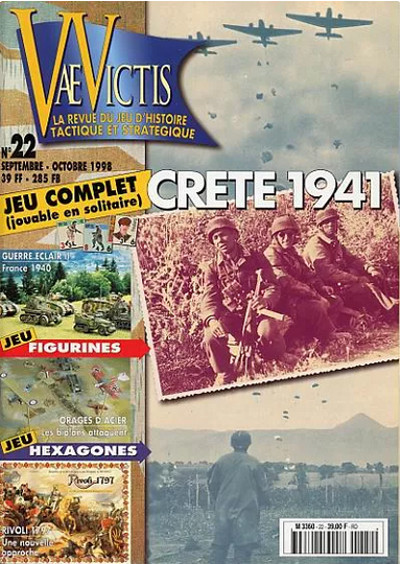
‘Crète 1941: Opération Merkur (1998)’ is a detailed simulation of the German airborne invasion of Crete, with concise rules spanning just over six pages. Playable in solo or two-player mode, this game captures wartime strategy complexity with eight-hour turns and battalion-level counters. Online translations make this historical experience accessible to a wider audience despite the rules being in French.
Details
In Crète 1941: Opération Merkur (1998), the rules have been criticized for their lack of clarity and heavy reliance on luck. However, the game effectively incorporates historical elements, such as the British initial command breakdown, adding an immersive layer for players to experience the challenges of the Battle of Crete.
TSWW: Operation Merkur – The Invasion of Crete, 1941 (2014)
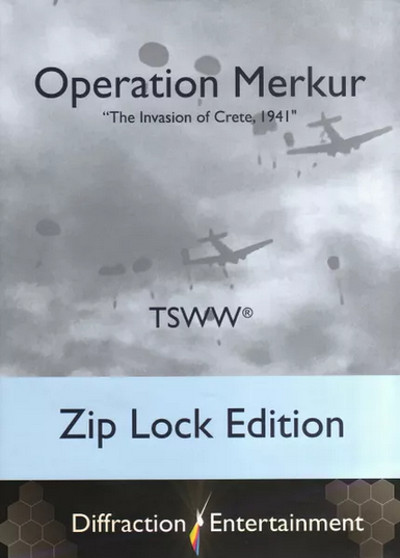
TSWW: Operation Merkur – The Invasion of Crete, 1941 (2014) provides a detailed simulation of the Axis assault on Crete with a streamlined ruleset and unique turn structure. The game includes half-month and five-day turns, offering players the opportunity to tackle strategic and operational challenges. Competitive play rules and optional units add customization and depth to the gameplay experience.
Details
The game ‘Operation Merkur’ is a solid entry point into the TSWW series, offering two scenarios for players to ease into the system and rules. Simulating the German airborne invasion of Crete, this board game caters to World War II strategy game enthusiasts with its historical context. While the included rules have posed challenges for some players, particularly with logistics, the game’s depth and complexity provide a rewarding test of strategic skills.
Descent on Crete: May 1941 (1978)
Descent on Crete: May 1941 (1978) is a tactical, company-level simulation of the largest German airdrop operation of World War II. The game features specialized rules for air drops, air strikes, supply chains, leadership, fatigue, and the participation of British armor. Players earn points by accomplishing objectives and eliminating enemy units, with the victor determined by the total points at the end of a specified number of turns.
Details
A massive project undertaken by SPI, Descent on Crete: May 1941 (1978) showcases two expansive map sections and over 1000 counters, creating a detailed yet burdensome simulation of the WWII German invasion of Crete. This extensive setup aims to offer a thorough historical experience but often proves overwhelming because of its sheer size and complexity.
The game is notable for changing the historical setup to enrich gameplay, a choice criticized by some purists as undermining the wargame’s authenticity. The developer’s goal was to balance the playability for the German side, which otherwise seemed disadvantaged. This alteration, however, can be viewed as detracting from the historical accuracy that many enthusiasts value.
While the sprawling maps provide a detailed depiction of Crete, their size often presents practical challenges. The game is rarely suitable for casual play, as it demands significant space and commitment. Counter density, particularly in key areas, can also pose issues, transforming the game into more of a historical study aid than a casual board game.
